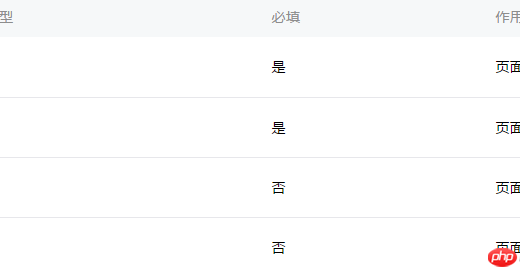当前位置: > > > > 优化 Go 中对 CSV 的写入
来源:stackoverflow
2024-04-30 16:00:39
0浏览
收藏
一分耕耘,一分收获!既然打开了这篇文章《优化 Go 中对 CSV 的写入》,就坚持看下去吧!文中内容包含等等知识点…希望你能在阅读本文后,能真真实实学到知识或者帮你解决心中的疑惑,也欢迎大佬或者新人朋友们多留言评论,多给建议!谢谢!
问题内容
以下代码片段验证电话号码并将详细信息写入 csv。
func Parse(phone Input, output *PhoneNumber) error {
var n PhoneNumber
num, _ := phonenumbers.Parse(phone.Number, phone.Prefix)
n.PhoneNumber = phonenumbers.Format(num, phonenumbers.E164)
n.CountryCode = num.GetCountryCode()
n.PhoneType = phonenumbers.GetNumberType(num)
n.NetworkName, _ = phonenumbers.GetCarrierForNumber(num, "EN")
n.Region = phonenumbers.GetRegionCodeForNumber(num)
*output = n
return nil
}
func createFile(path string) {
// detect if file exists
var _, err = os.Stat(path)
// create file if not exists
if os.IsNotExist(err) {
var file, err = os.Create(path)
if err != nil {
return
}
defer file.Close()
}
}
func worker(ctx context.Context, dst chan string, src chan []string) {
for {
select {
case dataArray, ok := <-src: // you must check for readable state of the channel.
if !ok {
return
}
go processNumber(dataArray[0])
case <-ctx.Done(): // if the context is cancelled, quit.
return
}
}
}
func processNumber(number string) {
num, e := phonenumbers.Parse(number, "")
if e != nil {
return
}
region := phonenumbers.GetRegionCodeForNumber(num)
carrier, _ := phonenumbers.GetCarrierForNumber(num, "EN")
path := "sample_all.csv"
createFile(path)
var csvFile, _ = os.OpenFile(path, os.O_APPEND|os.O_WRONLY, os.ModeAppend)
csvwriter := csv.NewWriter(csvFile)
_ = csvwriter.Write([]string{phonenumbers.Format(num, phonenumbers.E164), fmt.Sprintf("%v", num.GetCountryCode()), fmt.Sprintf("%v", phonenumbers.GetNumberType(num)), carrier, region})
defer csvFile.Close()
csvwriter.Flush()
}
func ParseFile(phone Input, output *PhoneNumber) error {
// create a context
ctx, cancel := context.WithCancel(context.Background())
defer cancel()
// that cancels at ctrl+C
go onSignal(os.Interrupt, cancel)
numberOfWorkers := 2
start := time.Now()
csvfile, err := os.Open(phone.File)
if err != nil {
log.Fatal(err)
}
defer csvfile.Close()
reader := csv.NewReader(csvfile)
// create the pair of input/output channels for the controller=>workers com.
src := make(chan []string)
out := make(chan string)
// use a waitgroup to manage synchronization
var wg sync.WaitGroup
// declare the workers
for i := 0; i < numberOfWorkers; i++ {
wg.Add(1)
go func() {
defer wg.Done()
worker(ctx, out, src)
}()
}
// read the csv and write it to src
go func() {
for {
record, err := reader.Read()
if err == io.EOF {
break
} else if err != nil {
log.Fatal(err)
}
src <- record // you might select on ctx.Done().
}
close(src) // close src to signal workers that no more job are incoming.
}()
// wait for worker group to finish and close out
go func() {
wg.Wait() // wait for writers to quit.
close(out) // when you close(out) it breaks the below loop.
}()
// drain the output
for res := range out {
fmt.Println(res)
}
fmt.Printf("\n%2fs", time.Since(start).Seconds())
return nil
}
在 processnumber 函数中,如果我跳过写入 csv,验证数字的过程会完成 6 秒,但在 csv 上一次写入一条记录会将时间消耗延长至 15 秒。
如何优化代码? 我可以将记录分块并以块的形式写入,而不是一次写入一行吗?
解决方案
直接在工作协程中工作,而不是为每个任务触发协程。
打开文件输出文件一次。刷新输出文件一次。
func worker(ctx context.Context, dst chan []string, src chan []string) {
for {
select {
case dataArray, ok := <-src: // you must check for readable state of the channel.
if !ok {
return
}
dst <- processNumber(dataArray[0])
case <-ctx.Done(): // if the context is cancelled, quit.
return
}
}
}
func processNumber(number string) []string {
num, e := phonenumbers.Parse(number, "")
if e != nil {
return
}
region := phonenumbers.GetRegionCodeForNumber(num)
carrier, _ := phonenumbers.GetCarrierForNumber(num, "EN")
return []string{phonenumbers.Format(num, phonenumbers.E164), fmt.Sprintf("%v", num.GetCountryCode()), fmt.Sprintf("%v", phonenumbers.GetNumberType(num)), carrier, region}
}
func ParseFile(phone Input, output *PhoneNumber) error {
// create a context
ctx, cancel := context.WithCancel(context.Background())
defer cancel()
// that cancels at ctrl+C
go onSignal(os.Interrupt, cancel)
numberOfWorkers := 2
start := time.Now()
csvfile, err := os.Open(phone.File)
if err != nil {
log.Fatal(err)
}
defer csvfile.Close()
reader := csv.NewReader(csvfile)
// create the pair of input/output channels for the controller=>workers com.
src := make(chan []string)
out := make(chan string)
// use a waitgroup to manage synchronization
var wg sync.WaitGroup
// declare the workers
for i := 0; i < numberOfWorkers; i++ {
wg.Add(1)
go func() {
defer wg.Done()
worker(ctx, out, src)
}()
}
// read the csv and write it to src
go func() {
for {
record, err := reader.Read()
if err == io.EOF {
break
} else if err != nil {
log.Fatal(err)
}
src <- record // you might select on ctx.Done().
}
close(src) // close src to signal workers that no more job are incoming.
}()
// wait for worker group to finish and close out
go func() {
wg.Wait() // wait for writers to quit.
close(out) // when you close(out) it breaks the below loop.
}()
path := "sample_all.csv"
file, err := os.Create(path)
if err != nil {
return err
}
defer file.Close()
csvwriter := csv.NewWriter(csvFile)
// drain the output
for res := range out {
csvwriter.Write(res)
}
csvwriter.Flush()
fmt.Printf("\n%2fs", time.Since(start).Seconds())
return nil
}
今天带大家了解了的相关知识,希望对你有所帮助;关于Golang的技术知识我们会一点点深入介绍,欢迎大家关注公众号,一起学习编程~


